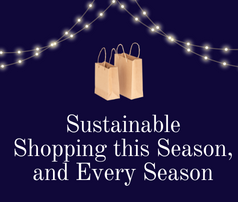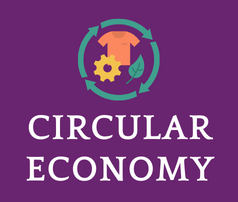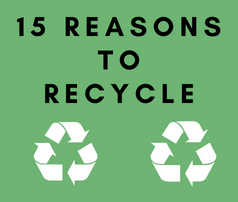 Green Benefits
Green Benefits
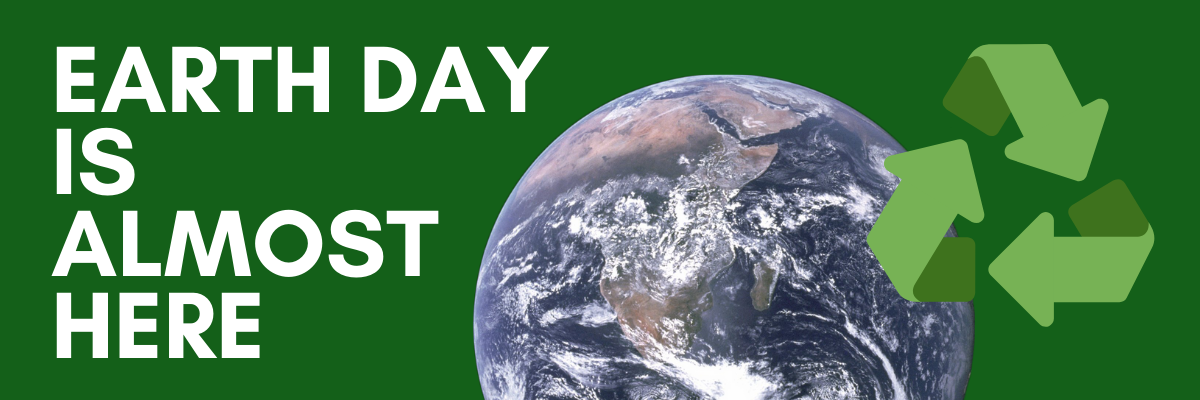
Next Wednesday is Earth Day. This year, 2020, marks 50 years of Earth Day being celebrated. On their website about Earth Day, the organizers of the Earth Day movement explain some of the history behind how Earth Day came to be:
“Americans were consuming vast amounts of leaded gas through massive and inefficient automobiles. Industry belched out smoke and sludge with little fear of the consequences from either the law or bad press. Air pollution was commonly accepted as the smell of prosperity. Until this point, mainstream America remained largely oblivious to environmental concerns and how a polluted environment threatens human health.
However, the stage was set for change with the publication of Rachel Carson’s New York Times bestseller Silent Spring in 1962. The book represented a watershed moment, selling more than 500,000 copies in 24 countries as it raised public awareness and concern for living organisms, the environment and the inextricable links between pollution and public health.”
Earth Day was founded by Gaylord Nelson, a U.S. Senator from Wisconsin. It was created to have a day focused on the environment and the concerns of air and water pollution. The very first Earth Day in 1970 had a turnout of 20 million Americans who “took to the streets, parks and auditoriums to demonstrate for a healthy, sustainable environment in massive coast-to-coast rallies.” That first Earth Day “led to the creation of the United States Environmental Protection Agency and the passage of the Clean Air, Clean Water and Endangered Species Acts.” Twenty years later, Earth Day went global.

Ideas for Earth Day
Every year there are a wide number of events to attend in celebration and honor of Earth Day. This year, however, with coronavirus creating the need for social distancing, here are some other ways you can help in your own neighborhood, yard or corner of the world.
Virtual Event
On Wednesday, April 22nd, Chicago Park Districts Friends of the Parks is hosting a digital Earth Day celebration. Previously, they had organized a city wide parks clean up day for the weekend prior. However, this has been postponed due to coronavirus. They are planning to reschedule the outdoor clean up day once the “shelter in place” order has ended. Check here to find out more about their Digital Earth Day.
Start Your Own Compost
Composting is great for the environment in that it reduces the amount of waste you are sending to the landfills each week and it is nutrient rich for your flower or vegetable garden. You can buy composting kits from online stores or read information online about creating a hole in your backyard for compost heap. Remember to cover it after adding food scraps to keep critters out.
Recycle Textiles
Another great way to help the environment is to clean out your textiles and donate them to our bins and partner resale stores. Earth Day would be a great day to come together as a family and clean out closets and dressers, but as mentioned in our other social media posts, please keep them at home in storage until the quarantine has lifted so that we can keep our employees safe. Textile recycling is great for the environment because it keeps textiles out of landfills and reduces greenhouse gas emissions.
Pick Up Trash in Your Neighborhood
If you are feeling stir crazy, leave home while also keeping others safe by taking a walk in your neighborhood, local park or preserve that remains open. Remember to continue to practice social distancing and stick close to your family. While you are out on your walk, take a pair of gloves and some trash bags to pick up trash along the way. Cleaning up your neighborhood and park helps the environment so that animals and other creatures don’t end up eating the trash or getting stuck in it. This also reduces the risk of trash being blown into bodies of water to contaminate lifeforms there.
Plant Flowers to Attract Butterflies and Bumblebees
Butterflies and bumblebees are important to our ecosystems and pollination. They offer natural pest control and provide food for larger animals. They also eat weedy plants. “About one third of the food people eat depends on the work of pollinators such as butterflies.” (Read more here.) According to this site for the USDA, “bees of all sorts pollinate approximately 75 percent of the fruits, nuts and vegetables grown in the United States, and one out of every four bites of food people take is courtesy of bee pollination.” Butterflies and bumblebees are vital parts of the ecosystem and can help in growing flower and vegetable gardens in your yard. This Earth Day, you can choose to plant flowers and other plants that will attract these incredibly beneficial creatures. For information on what to plant, read more here.
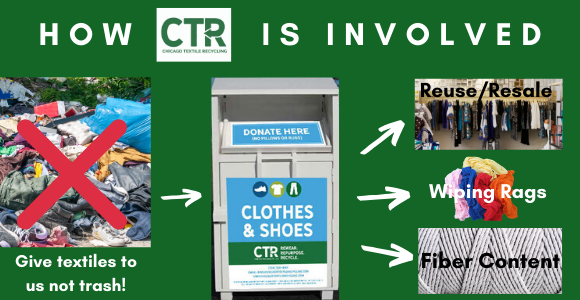
How CTR is Involved on Earth Day and Everyday
Here at Chicago Textile Recycling, we are ever expanding our efforts to decrease textile waste and we are seeking additional partners. We are currently seeking resale stores in the Chicagoland area looking to generate funds recycling excess and unsaleable items. We are also seeking communities, businesses or organizations interested in establishing a textile recycling partnership program by hosting a recycling bin! If you know of any place of business in your area willing to host a bin or expand their outreach for helping the Earth, please reach out to us.
Textiles currently make up 6.3% of the waste stream, which means the average American throws away 81 lbs of clothing annually! So the need is real! We have premade letters and informative fliers you can share with anyone who may be interested and we offer numerous incentives for you in using our bins:
- Get paid for goods collected
- Provide a convenient service
- Increase traffic to your business
- Help the environment
- Support a local small business

Earth Day
No matter what you choose to do this Earth Day, take the day, the week, the month and hopefully the whole year to share with others how important it is to do our part in taking care of our planet. Educate yourself and others on small changes to make in your day to day that can add up to a major difference for the future, and remember to recycle your textiles.

